Decoupage on glass: ideas, materials and process of execution
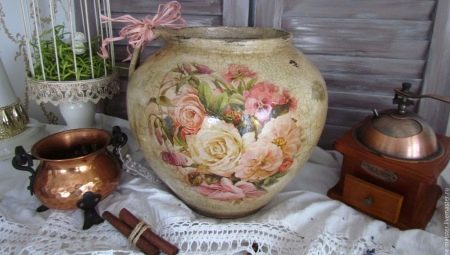
Decoupage translated from French means "cut". Cut out applications from pictures, and then, with the help of glue and varnish, decorate any surface with them. It can be wood, plastic, metal, fabric, ceramics, leather, glass.
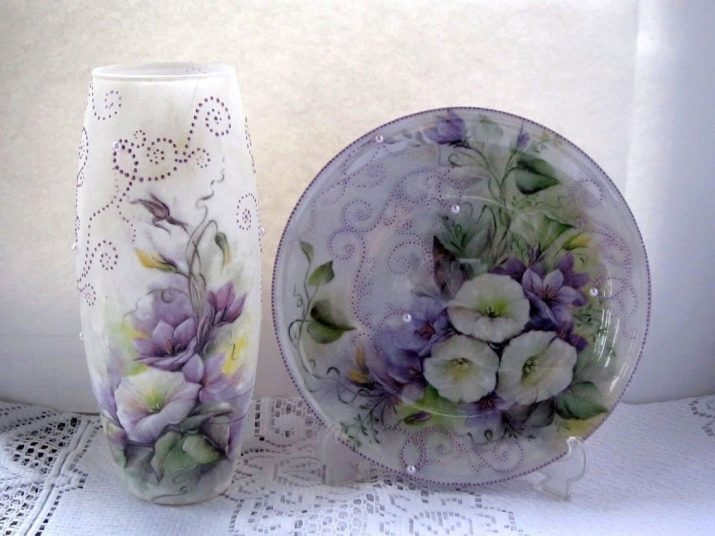
General information
Although art is quite old, it was in the 21st century that it acquired a grandiose scale. The enthusiasm of needlewomen for decoupage technique is associated with the abundance and availability of raw materials in our time.
In addition, this hobby has many advantages:
- all old things in the house (chairs, shelves, dishes, banks) can not only be updated, but made into unique, exclusive household items;
- the cost of transforming old things is minimal;
- a lot of pleasure from their work;
- with the help of decoupage, even those who cannot draw can feel like an artist and create amazing things.
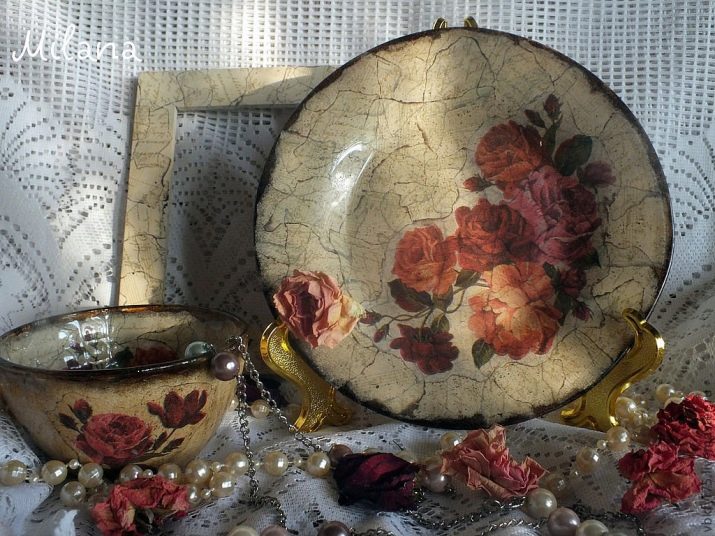
Many craftswomen prefer to work with glass due to the abundance of this material at home. Everyone in the house has bottles, jars, dishes, mirrors, photo frames, clocks under glass - everything will fit for creating beautiful and stylish crafts.
But glass also has its drawbacks - it is a rather fragile material, it obliges you to be especially careful. Besides, sliding surface requires pre-treatmentso that the decor can easily gain a foothold on the work item.
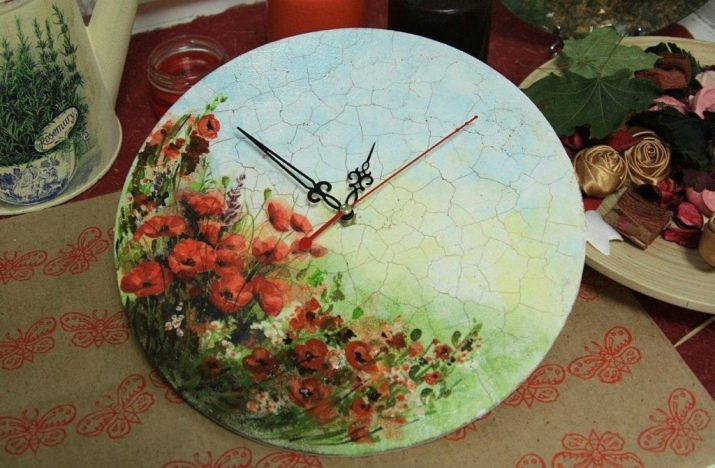
Glass decoration using applications has 2 techniques:
- direct decoupage - the picture is applied to the outside of the glass object;
- reverse decoupage - the drawing is pasted on the inside of the object.
Sometimes these two types are mixed, that is, the work is performed using the reverse decoupage technique, and then finalized on the outer glass surface.
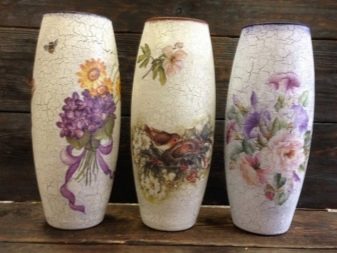
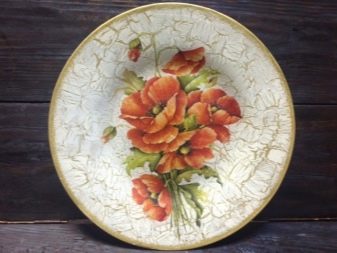
Materials and tools
Before starting work, you need to collect the necessary tools and materials. Today it is not difficult to do this - everything you need for decoupage is purchased in handicraft stores. If there are none nearby, use the resources of online stores.
In such outlets, you can find rice paper, finished lacquer prints, stencils, decoupage cards with pictures, colored single-layer napkins. From the offered collections, a drawing is selected in accordance with taste, the required color and style. There are no problems in our time and with a primer, varnishes and paint.
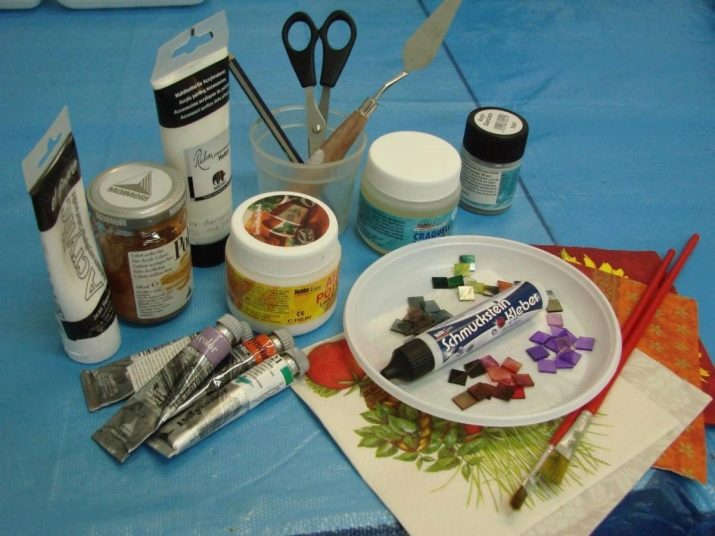
To decoupage glass surfaces, you will need the following tools and materials:
- the item itself for decoration;
- the selected drawing on any paper medium;
- primer for difficult surfaces, you can use an acrylic mixture;
- alcohol-containing liquid for degreasing the material;
- tonal paint (acrylic);
- brushes;
- diluted PVA glue, or special industrial decoupage glue;
- an ordinary sponge for shading the coloring layer;
- texture paste (if volume is needed);
- finishing varnish and varnish compositions for selected additional techniques;
- a container with water for soaking the pattern.
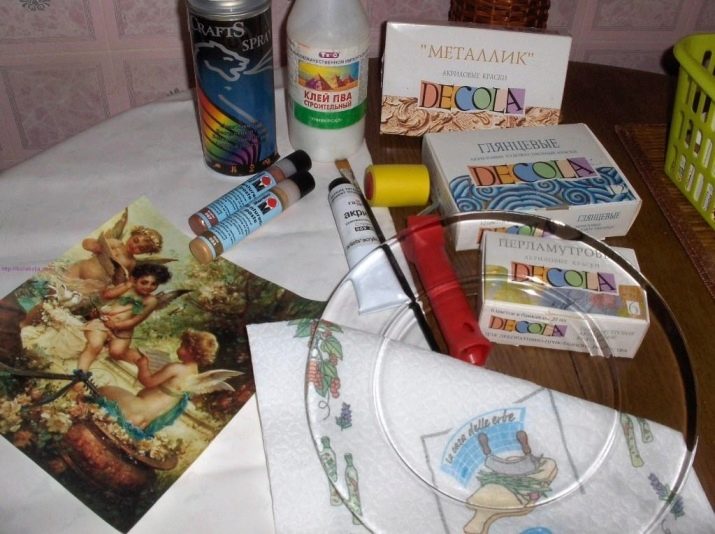
Direct decoupage
Direct decoupage technique is suitable for any material. Therefore, choosing a glass jug or decanter, they work with it in the same way as with a thing made of wood, metal, plastic or any other material.
The only difference will be increased caution due to the fragility of the material and the treatment of the slippery glass surface with emery paper for better adhesion to the ground.
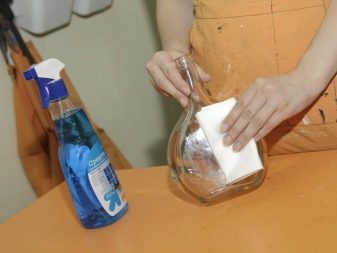
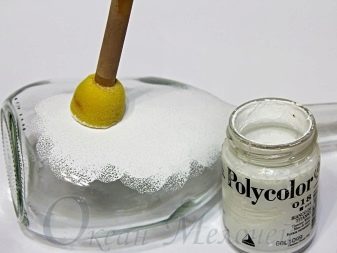
We offer beginners to use the step-by-step instructions for decorating using the decoupage technique on a transparent material:
- Direct decoupage, for example, of a glass shade, involves drawing from the outside of the product. The plafond is washed well, dried, rubbed a little with sandpaper. Then it is treated with an alcohol-containing solution, thus degreasing the surface.
- A primer is applied to the prepared dried plafond.
- After drying, the work item is painted with acrylic varnish to protect the base layer. Preparation for decoupage is over. A carefully carried out preparatory stage of work guarantees a high-quality outcome.
- Decoupage cards, photographs, and other paper-based drawings are pre-cut and soaked for 20-30 seconds, then carefully laid out with the front side on a clean layer of paper or cellophane, smoothed out with a damp brush and carefully rolled up excess layers of paper, dried a little.
- Then PVA varnish is prepared. To do this, dilute the glue with a liquid (1: 1). A layer of glue is carefully applied to the back of the picture, the paper is removed and the picture is placed on the shade. Smooth out thoroughly with a damp brush.
- When the surface dries up, it can be decorated in any additional ways: cover with mother-of-pearl, patinate, age with craquelure varnish.
- At the last stage, the product is covered with a finishing varnish and left to dry.

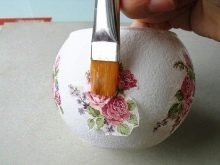
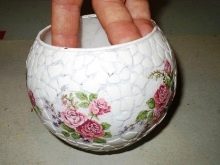
In the second way, the technique of direct decoupage is produced without a primer in order to preserve the transparent structure of the glass. The glued picture is covered with several layers of varnish, while processing only the drawing, the entire shade remains intact.
When working with varnish on glasses and mugs, one should try not to bring the coating layers to the edges of the product so that there is no contact with the varnish during operation.
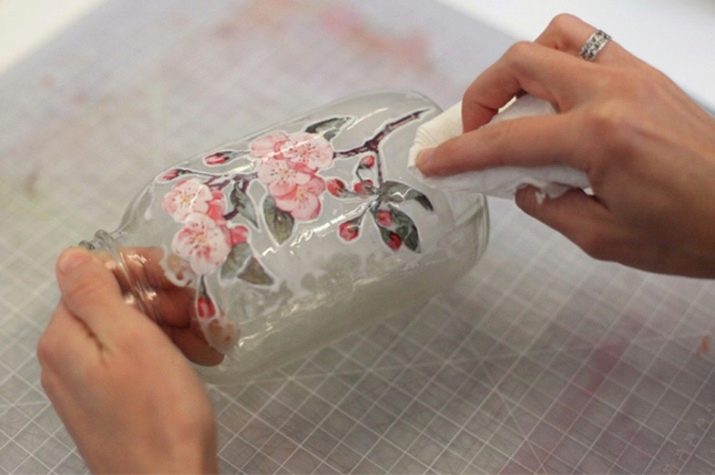
Reverse decoupage
Reverse decoupage is performed only on transparent materials. Decorate vases, jars, glasses, bottles and other household items in the kitchen.It is convenient to decorate glass plates in this way, since food will not come into contact with the varnish during use.
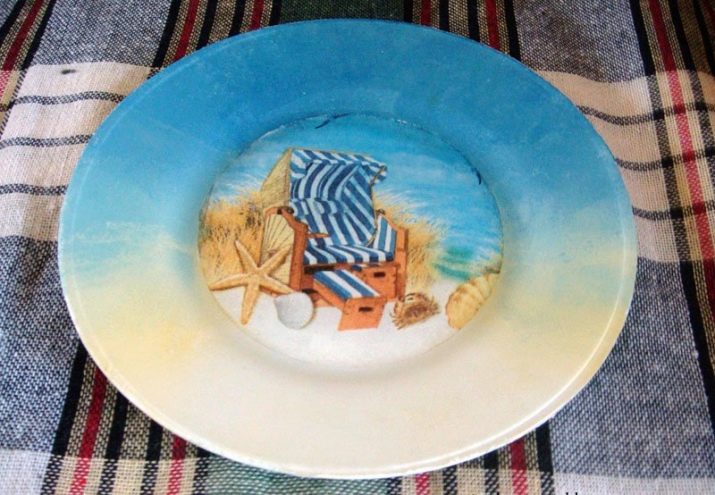
Consider how to make decoupage on a plate with your own hands.
- The drawing is selected and cut out, divided into fragments.
- Dilute PVA glue in equal parts with water, apply it to the front side of the pattern fragments and apply it on the back of the plate, carefully composing the composition.
- Smooth the drawing with a damp brush.
- When the picture is dry, the back of the plate can be painted or covered with craquelure varnish.
- At the last stage, several layers of varnish are applied and the product is allowed to dry well.
- Then the plate is baked in the oven for about an hour at a temperature of 90 degrees, to fix the pattern.
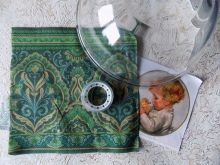
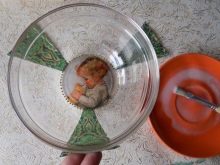
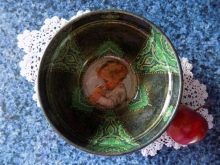
Auxiliary techniques for decoupage
Some craftsmen give their work a very effective and realistic look. They achieve results by shaping volume and using various auxiliary techniques. For example, you can not just prime and paint an object for applique, but create an imitation of a metal surface or the effect of antiquity.
If you want to create volume, choose a textured primer with fillers. With its help, beautiful structural surfaces resembling stucco molding are obtained.
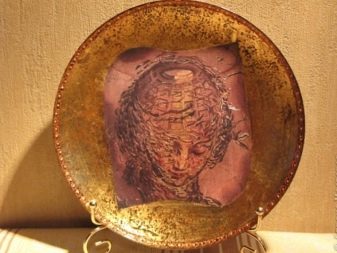
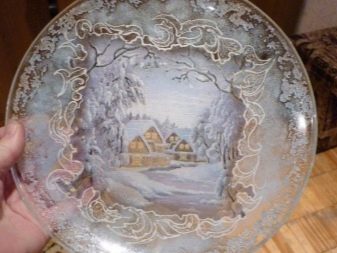
To achieve special effects, you can use the following materials and methods.
Scuffed impression
It is necessary to prepare several types of contrasting paint (acrylic). You will also need a wax candle and a hard-topped sponge. You can use sandpaper instead.
The object is painted with one of the types of paint. After drying, the places in which it is planned to create scuffs are rubbed with a wax candle. The entire surface is covered with a second type of paint. Allow the workpiece to dry well. Then, using a hard object (emery, sponge), they clean the surface of wax. Two types of paint, wiped off with a sponge, create a realistic scuff.
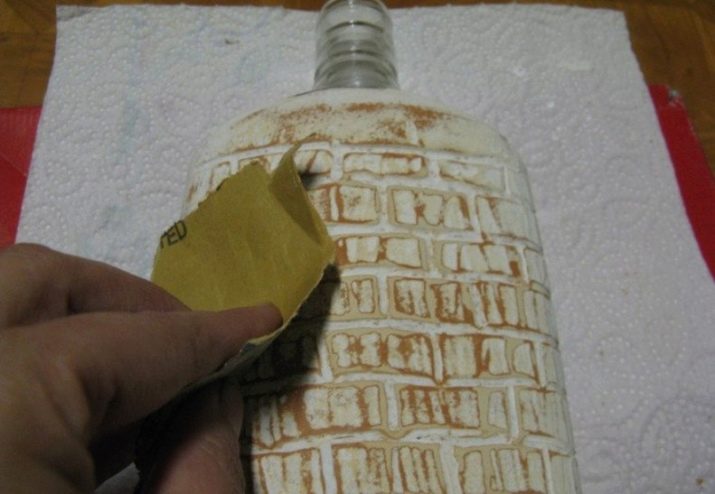
Potal
These are the thinnest sheets of metal that imitate gold leaf. To decorate a glass surface, you need to additionally purchase several special brushes, glue for gilding and shellac (varnish for gilding). With the help of gold leaf, a silvery or golden surface is prepared for further decoupage work.

Craquelure
Artificial aging of the paint and varnish surface. The crackle technique is often used in combination with decoupage. The surface of the object is covered with a fine network of cracks. This is accomplished in the following way: Craquelure varnish is applied to the paint layer, allowed to dry almost until ready, then the object is painted again with acrylic paint diluted with water to a liquid state. Allow to dry for 24 hours. During this time, the paint cracks, and it is fixed with shellac varnish.
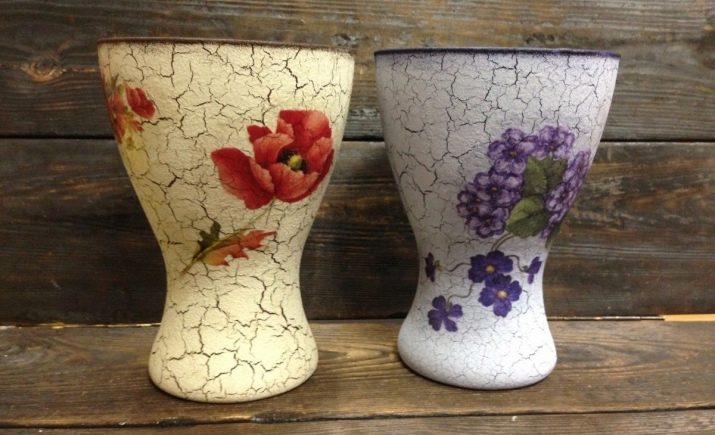
Patina
This is an imitation of a greenish brown bloom. In nature, it occurs as a result of oxidation, under the influence of time, on bronze and copper products. The patina technique helps to emphasize the signs of aging on objects of any material.
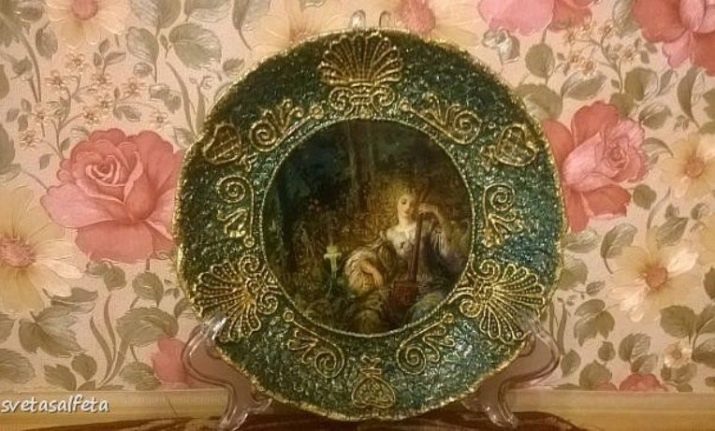
Beautiful examples
How extraordinary and delightful the decoupage technique looks on a glass surface can be seen by looking at photographs.
- Vase, decorated with gold leaf and textured material.
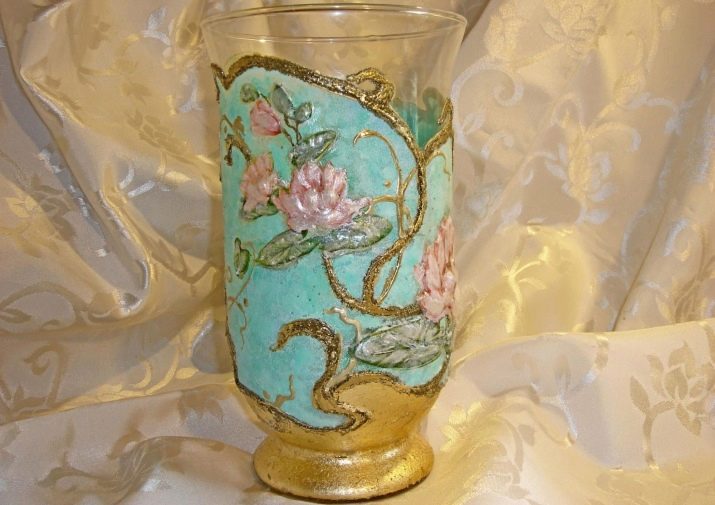
- Decoupage of bottles, New Year's series.

- The nautical theme was chosen in the work on the plate. The decoupage technique is complemented by painted elements using rhinestones.

- Direct decoupage of a glass jar and lid.
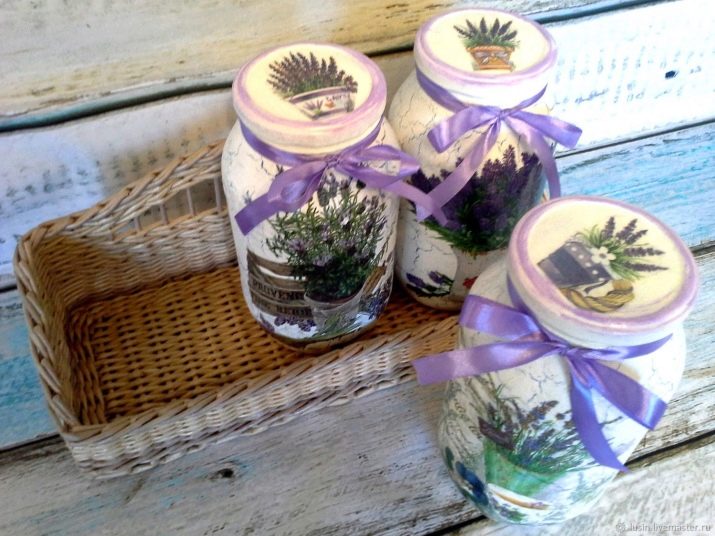
- Reverse decoupage on the coffee table top.
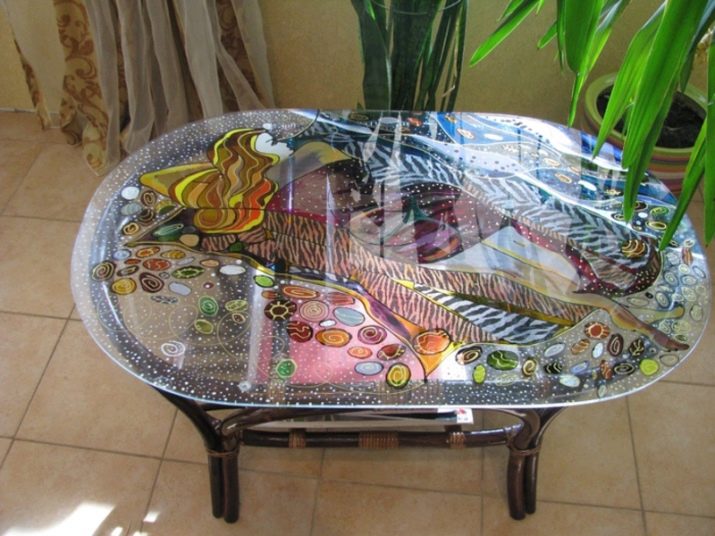
- Design of the Snow Queen bottle.
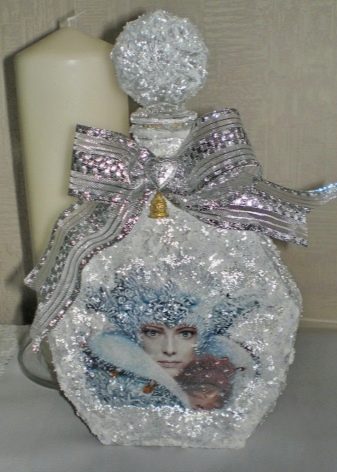
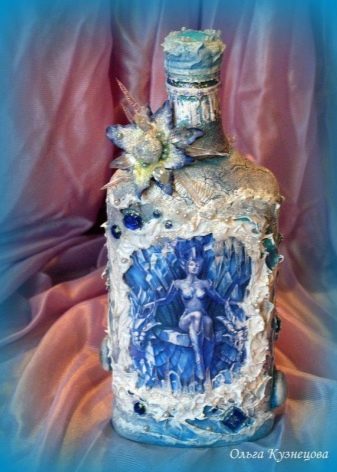
- “Bottle for Gin” is a decoupage made using the patina technique and textured paste.

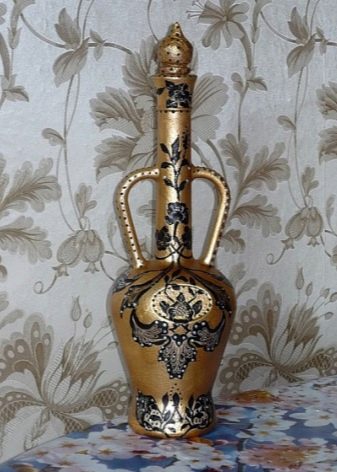
Decoupage on glass produces fantastically beautiful results. Things decorated in this way are not a shame to donate, put on the table or decorate the walls with products of our own production.
You can get acquainted with the technology of creating decoupage on glass in the next video.








